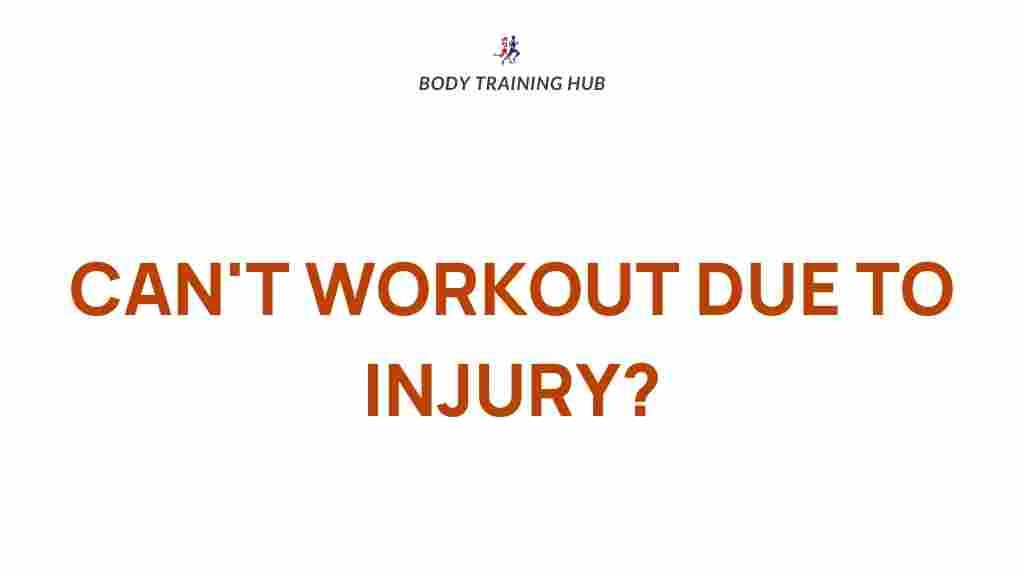Unlocking the Secrets of Injury Recovery
Injury recovery is a critical aspect of returning to fitness and maintaining overall health. Whether you’re an athlete, a fitness enthusiast, or someone who has suffered from a personal injury, understanding the strategies for effective recovery can make all the difference in achieving a stronger comeback. In this article, we will explore comprehensive injury recovery strategies that encompass rehabilitation, strength training, and the development of a personalized recovery plan. With these tools, you’ll be well-equipped to navigate your recovery journey.
The Importance of a Recovery Plan
A well-structured recovery plan is essential for anyone looking to bounce back from an injury. An effective recovery plan helps to:
- Reduce the risk of re-injury.
- Enhance overall physical performance.
- Improve mental resilience.
- Provide a clear roadmap for rehabilitation.
When it comes to injury recovery, a personalized plan tailored to your specific needs is crucial. This plan should combine rest, rehabilitation exercises, and strength training to rebuild your body and confidence.
Step-by-Step Process for Injury Recovery
Embarking on the journey of injury recovery can be daunting, but breaking it down into manageable steps can make the process smoother. Here’s a step-by-step guide to help you through your recovery:
1. Assess the Injury
The first step in your recovery is to assess the extent of your injury. Consult a medical professional to understand the nature of your injury and the recommended treatment. This may include:
- Physical examinations.
- X-rays or MRI scans.
- Consultations with specialists.
2. Follow Medical Advice
Once you have a clear understanding of your injury, adhere strictly to your healthcare provider’s recommendations. This may involve:
- Medications for pain relief and inflammation.
- Rest and immobilization of the affected area.
- Physical therapy sessions.
3. Start Rehabilitation
Rehabilitation is a vital component of injury recovery. Engage in physical therapy to regain strength, flexibility, and range of motion. Your rehabilitation program may include:
- Stretching exercises.
- Low-impact activities like swimming or cycling.
- Gradual reintroduction of weight-bearing exercises.
Physical therapists can create a tailored rehabilitation program that focuses on your specific injury and fitness level.
4. Incorporate Strength Training
Once you have the green light from your healthcare provider, begin to incorporate strength training into your recovery plan. Strength training is critical for:
- Rebuilding muscle strength.
- Improving joint stability.
- Enhancing overall physical performance.
Start with light weights and focus on proper form to avoid aggravating your injury. Consider working with a certified personal trainer to ensure you’re using the right techniques.
5. Monitor Your Progress
Tracking your recovery is essential. Keep a journal to note your exercises, pain levels, and overall feelings. This can help you identify patterns and areas that need more attention. Regular check-ins with your healthcare provider or physical therapist are also crucial to assess your progress and make necessary adjustments to your recovery plan.
6. Focus on Nutrition and Hydration
Your body needs the right fuel to recover effectively. A balanced diet rich in essential nutrients can significantly impact your injury recovery. Key dietary components include:
- Protein: Vital for muscle repair.
- Healthy fats: Support joint health and reduce inflammation.
- Vitamins and minerals: Crucial for overall recovery (consider vitamin C, D, and calcium).
Don’t forget to stay hydrated, as proper hydration aids in recovery and helps reduce muscle soreness.
7. Gradually Return to Activity
As you recover, gradually reintroduce your regular activities. Start with low-impact exercises and progressively increase intensity as your strength and confidence improve. Listen to your body; if you experience pain, it may be a sign to take a step back and reassess your recovery plan.
Troubleshooting Common Recovery Issues
Even with a solid recovery plan, you may encounter obstacles along the way. Here are some common issues and tips for addressing them:
1. Pain and Discomfort
It’s normal to experience some discomfort during recovery, but persistent pain should not be ignored. If you notice:
- Increased pain during exercises.
- Swelling that doesn’t subside.
- A decrease in range of motion.
Consult your healthcare provider immediately to ensure you’re not aggravating your injury.
2. Lack of Motivation
Staying motivated during recovery can be challenging. To combat this, you can:
- Set small, achievable goals.
- Celebrate progress, no matter how minor.
- Join a support group or connect with others who are recovering from injuries.
3. Fear of Re-Injury
It’s common to fear re-injury, especially as you begin to return to physical activity. To overcome this fear:
- Educate yourself about your injury.
- Work with a physical therapist to build confidence in your movements.
- Gradually increase intensity, ensuring you feel comfortable at each stage.
Conclusion
Injury recovery is a multifaceted process that requires patience, dedication, and a comprehensive recovery plan. By following the steps outlined in this article—from assessing your injury to incorporating strength training and monitoring your progress—you can effectively navigate your recovery journey. Remember that each person’s body is unique, so listen to yours and adapt your recovery plan as necessary. With determination and the right strategies in place, you can unlock the secrets of injury recovery and achieve a stronger comeback.
For more tips on enhancing your fitness journey, check out our resources on fitness recovery.
For additional reading on injury recovery strategies, visit this informative article.
This article is in the category Strength & Recovery and created by BodyTraining Team
